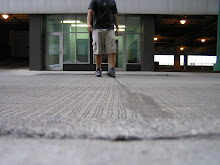THE BASICS
1. Packs
With a warmer sleeping bag and extra clothing, it's a good bet that you'll need to carry 25% more weight than you would in summer. Leave your daypack in your gear closet and choose a full-size internal frame backpack that's 3500 cubic inches or larger. And make sure it has external compartments where you can keep snacks, pack covers, and an extra layer within easy reach.
2. Sleeping Bags
Typically a sleeping bag rated between 0°F and 20°F will keep you warm and comfortable. An ultralight 40°F sleeping bag just won't cut it this time of year. If your body tends to run cold, you may also want to think about slipping your sleeping bag inside a bivy sack or an overbag. This adds to your bag's comfort range and keeps it drier, especially if you're sharing your tent with, say, an always-wet Siberian husky.
3. Sleeping Pads
You can have the warmest, loftiest sleeping bag in the world, but try using it in October without a foam sleeping pad underneath, and you'll end up doing jumping jacks all night to stay warm. Sleeping pads protect you from the cold ground, and as a rule, the thicker the sleeping pad, the warmer you'll be. However, keeping the weight to a minimum is pretty important too, so go with a self-inflating open-cell pad between 1 and 1½ inches thick. Also, forget the half-length pads. In colder weather, the mattress should be about as long as you are.
4. Tents
Most 3-season tents work fine in the fall. You aren't quite to the point where a heavier winter tent is necessary, but as the temperature drops, condensation becomes more of a concern. Choosing a tent with partial mesh panels and with vents built into the rainfly will ensure optimal airflow and help you avoid a rude (and frosty) awakening.
5. Gloves and Hats
Depending on the weather report, choose light gloves and a hat. Either synthetic or wool is fine. You'll also be very happy to have a warm cap around camp as things cool down. If it's really cold, keep the hat on when you sleep. A thin balaclava liner is another good option. It protects the neck and face when rolled down, and can be worn as a simple hat when rolled up.
6. Headlamps
As the days shorten, it's easy to misjudge the hike and arrive at your campsite after sunset, so be sure to include a lightweight headlamp among your light sources. Because cold weather saps batteries, a spare set is an extremely good idea.
7. Footwear
You probably don't need insulated boots yet, but for added warmth, wear slightly thicker socks. Wool or partial wool is a great choice, as it insulates even when wet. Also take along multiple pairs of socks and put on a dry pair as soon as you set up camp. To get a cold morning off to a warm start, keep some dry socks plus your shoes' footbeds in the sleeping bag with you at night.
LAYERING
A moisture-managing base layer, a warm insulating layer, and a weatherproof shell are the three components of the classic layering system. In the unpredictable weather of fall, layering allows you to bulk up in the cold and then strip down as you warm up.
8. Base Layer
Summer is over, so leave the cotton tee back in your car. A thin T-shirt made of polyester or merino wool will wick sweat away from your skin and onward to the outer layers. Both short and long sleeves work. You will probably use this as your only top layer when the sun is highest.
9. Midlayer
Because autumn weather doesn't call for a bulletproof winter parka, consider a soft shell jacket. Resistant to wind and water, the versatile soft shell is designed for aerobic activities and can be worn as the outer layer or under a waterproof shell for extra warmth. A lightweight fleece or midweight merino wool top is also a good choice. If wicked cold weather is a possibility, pack along a down sweater/jacket. Good for an emergency, you can also break it out on cold evenings.
10. Waterproof, Breathable Shell
If you stay dry, you stay warm. Or at least warmer. As the temperature drops toward freezing, the last thing you want is to be completely soaked and 20 miles from the trailhead. Go with a proven waterproof material like System Three or Gore-Tex. The shell can be noninsulated or lightly insulated. One with underarm zippers is best, as it allows you to vent heat and moisture.
Yes.












No comments:
Post a Comment